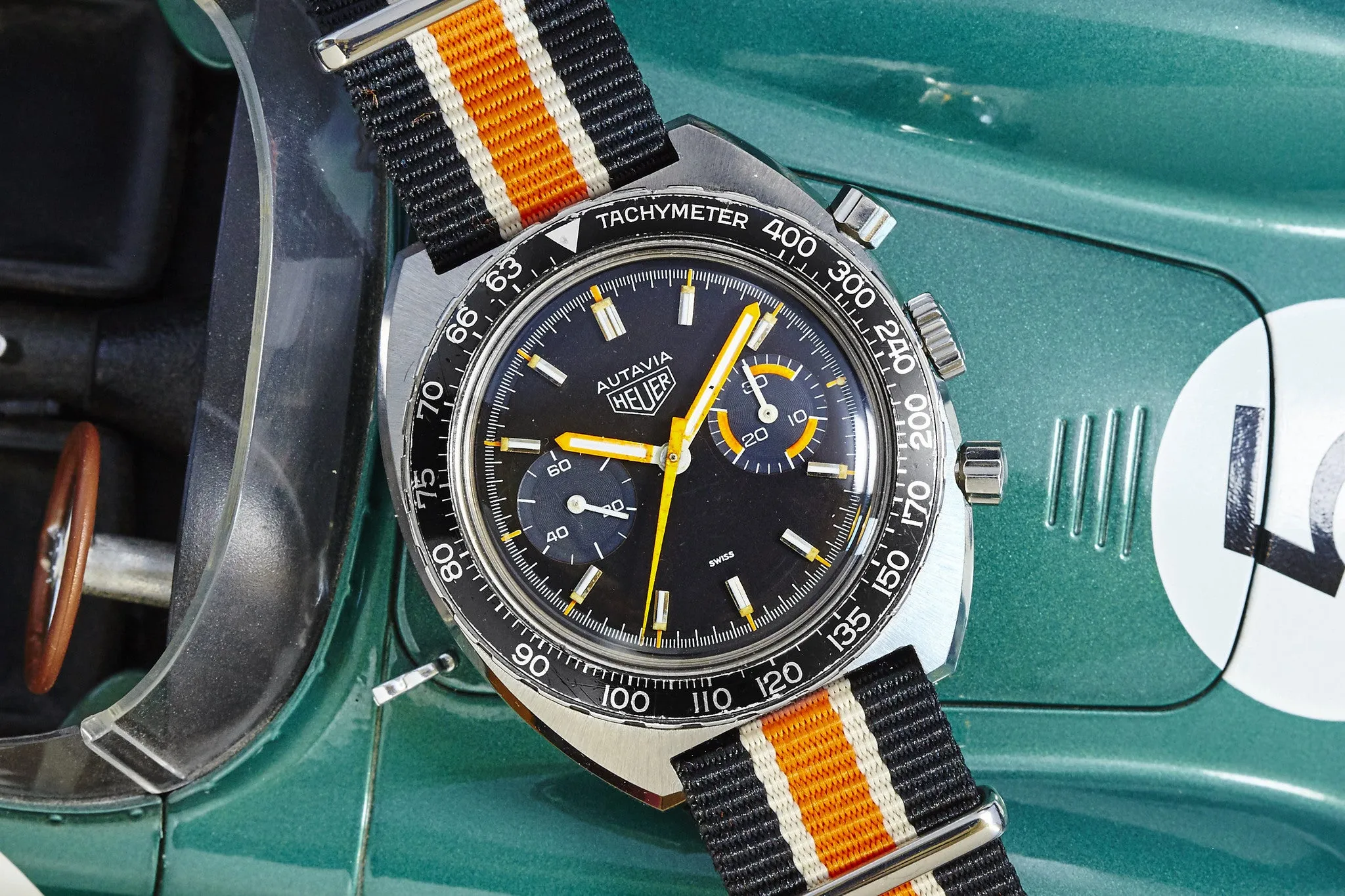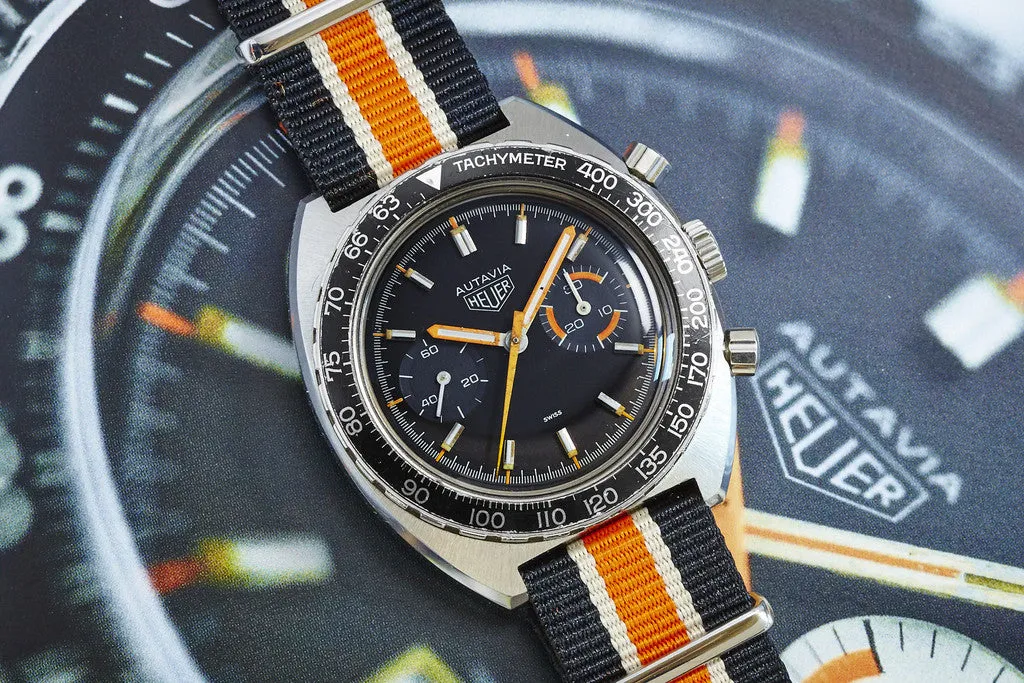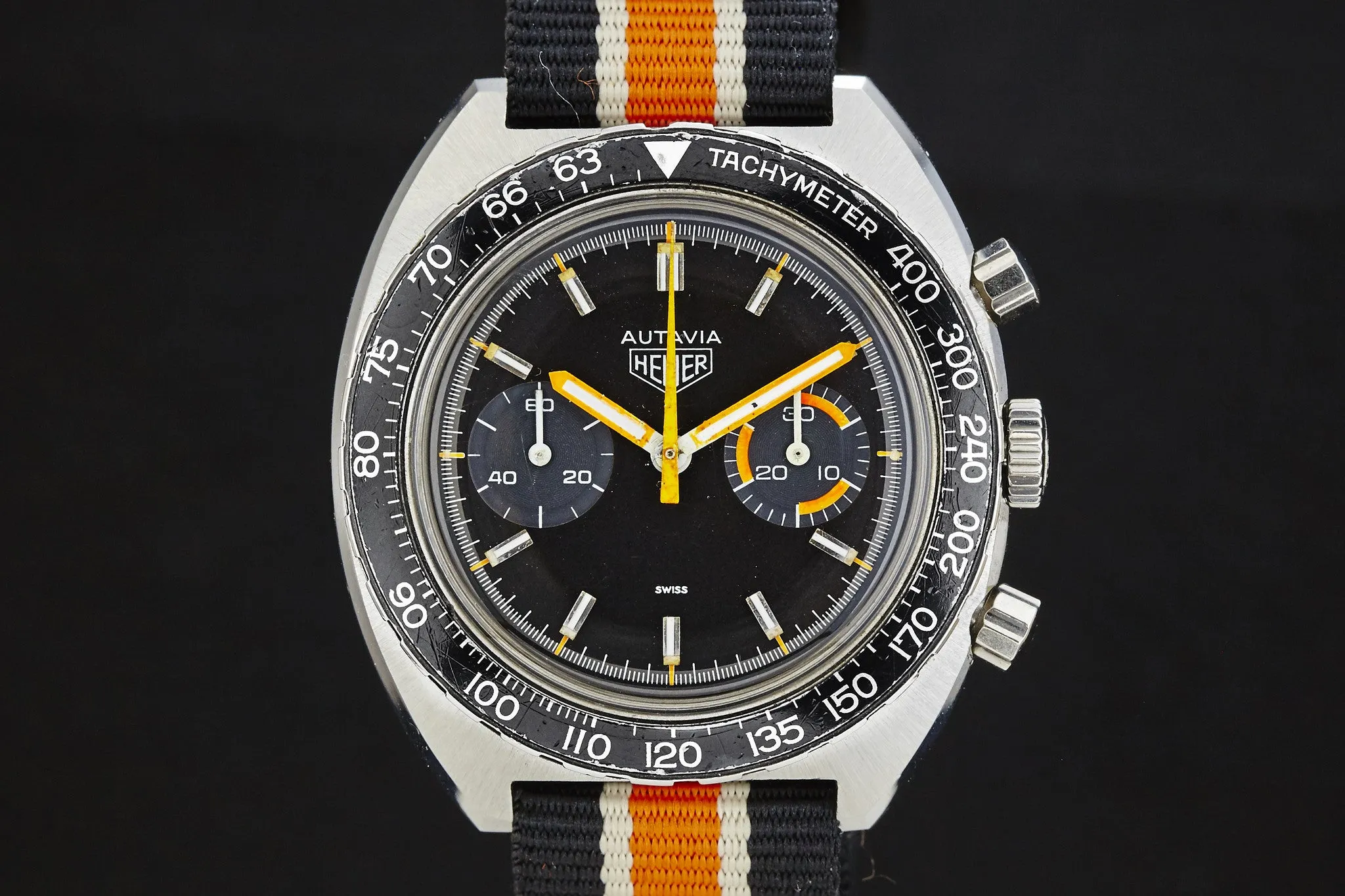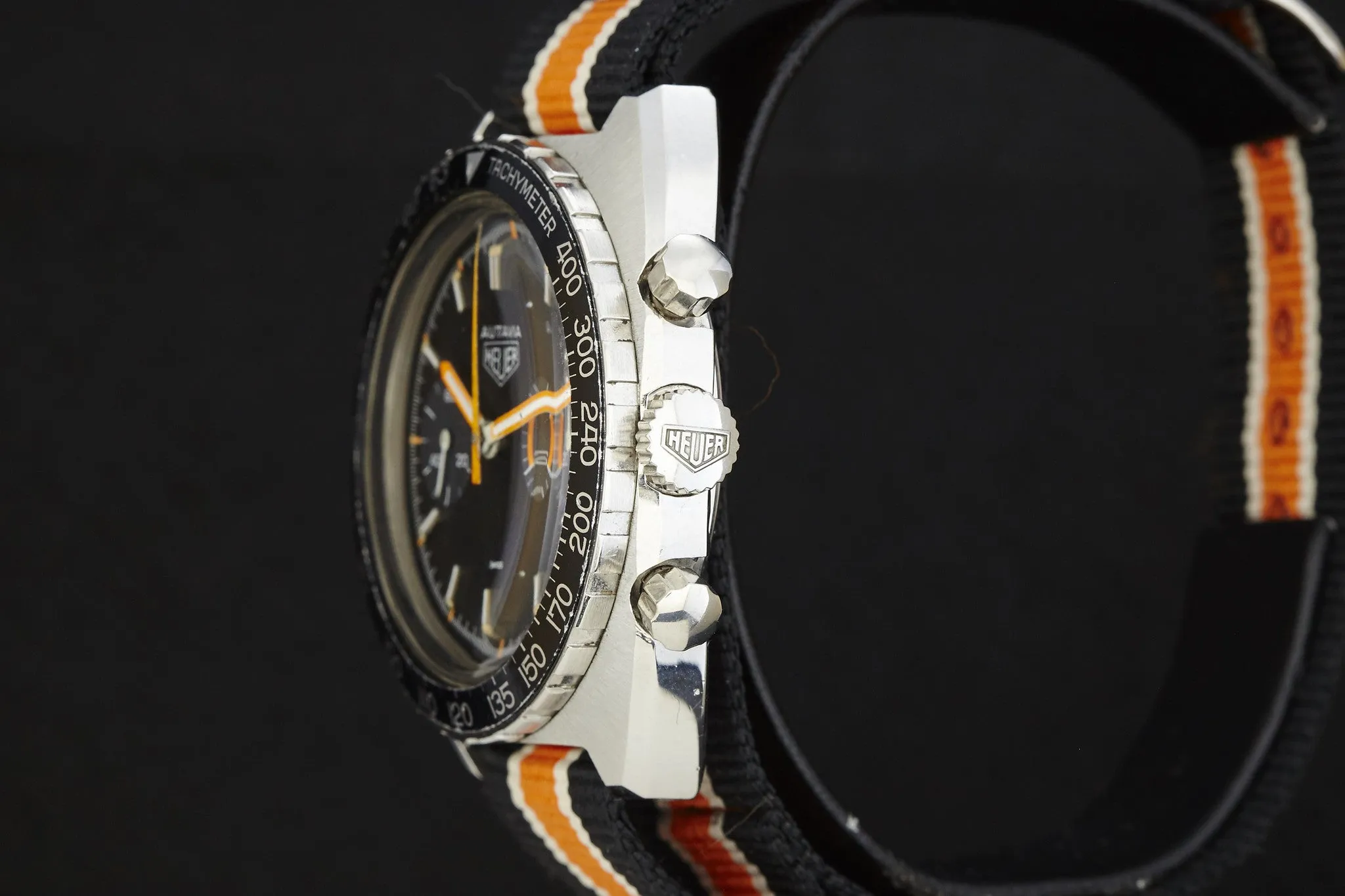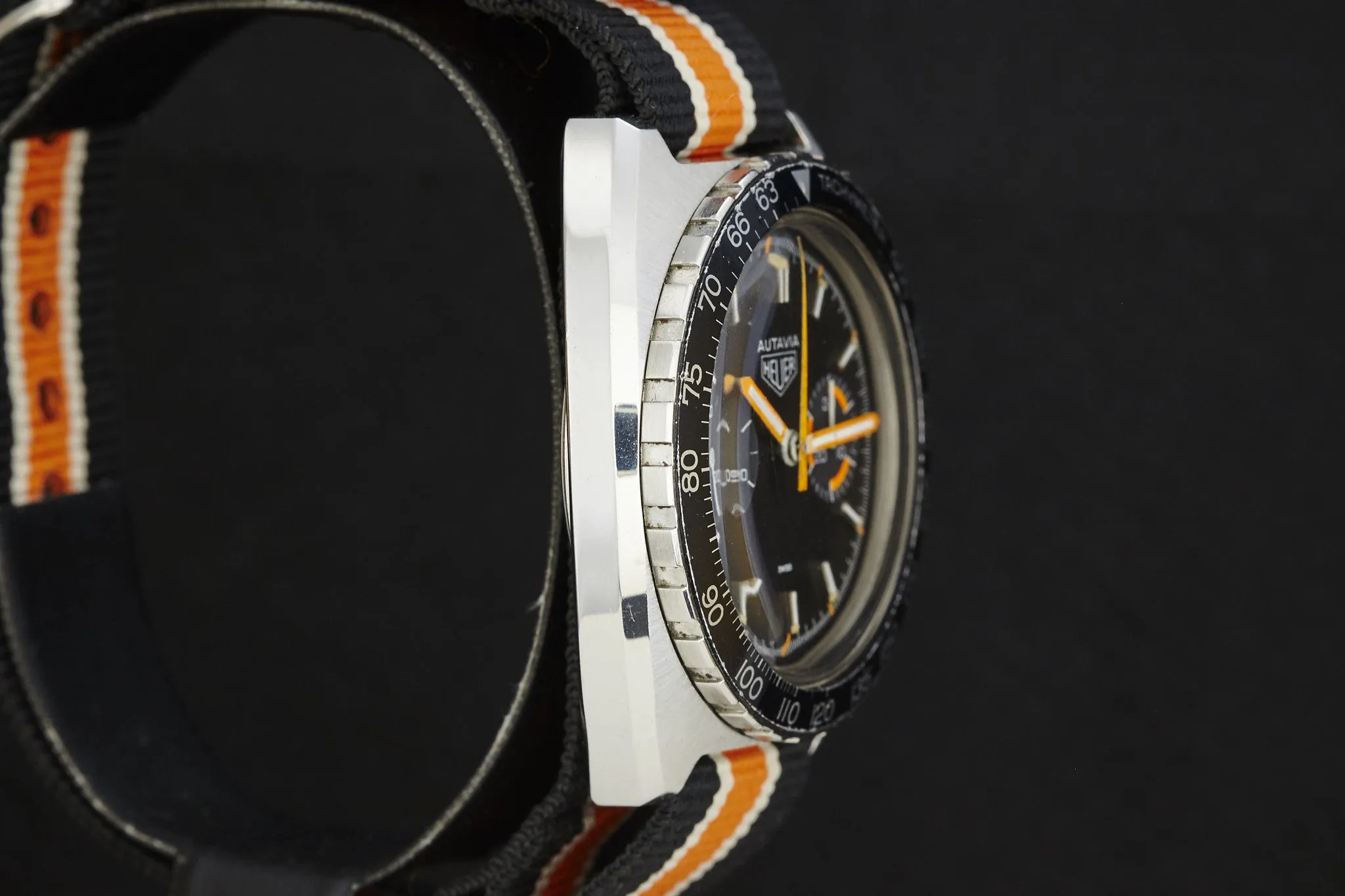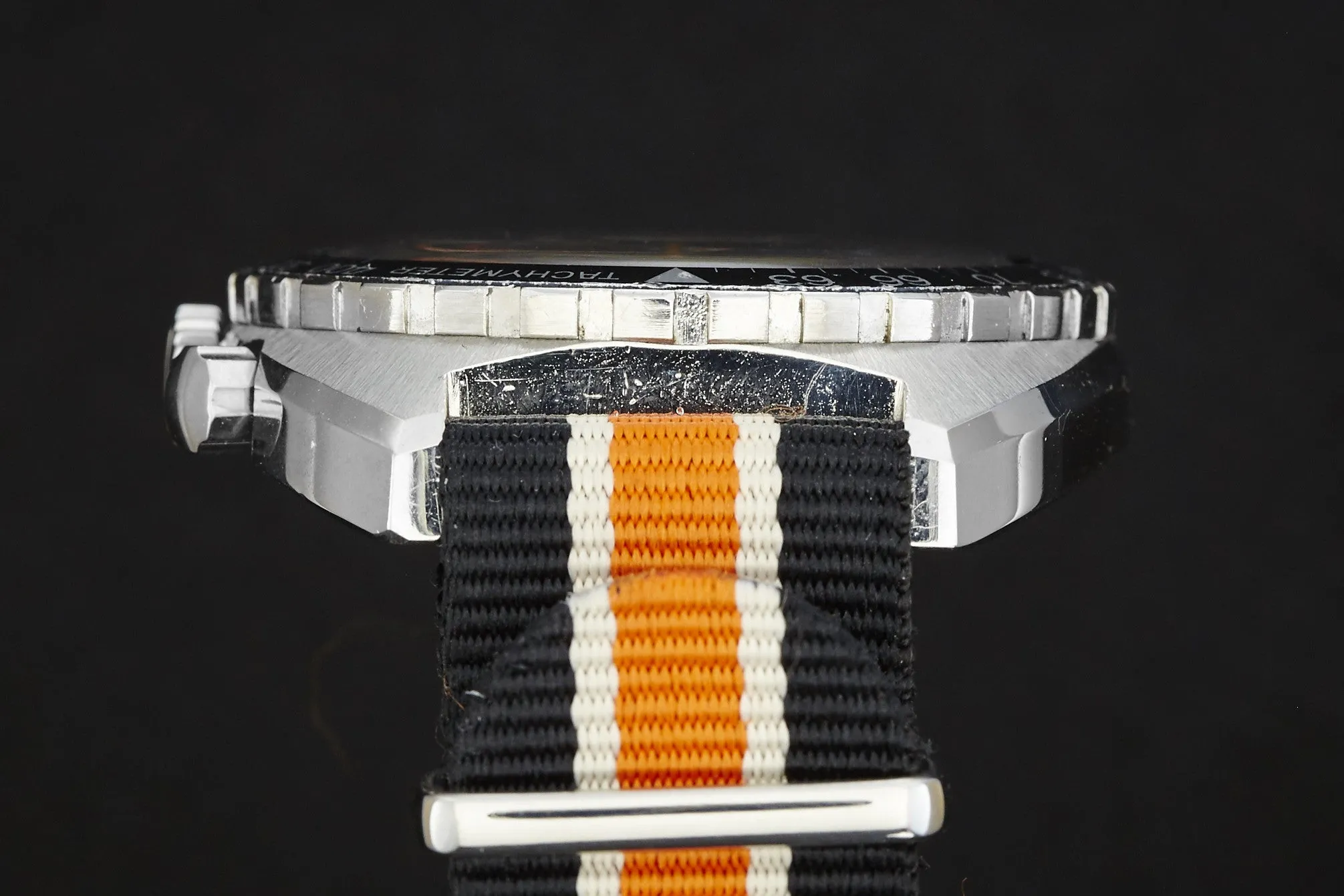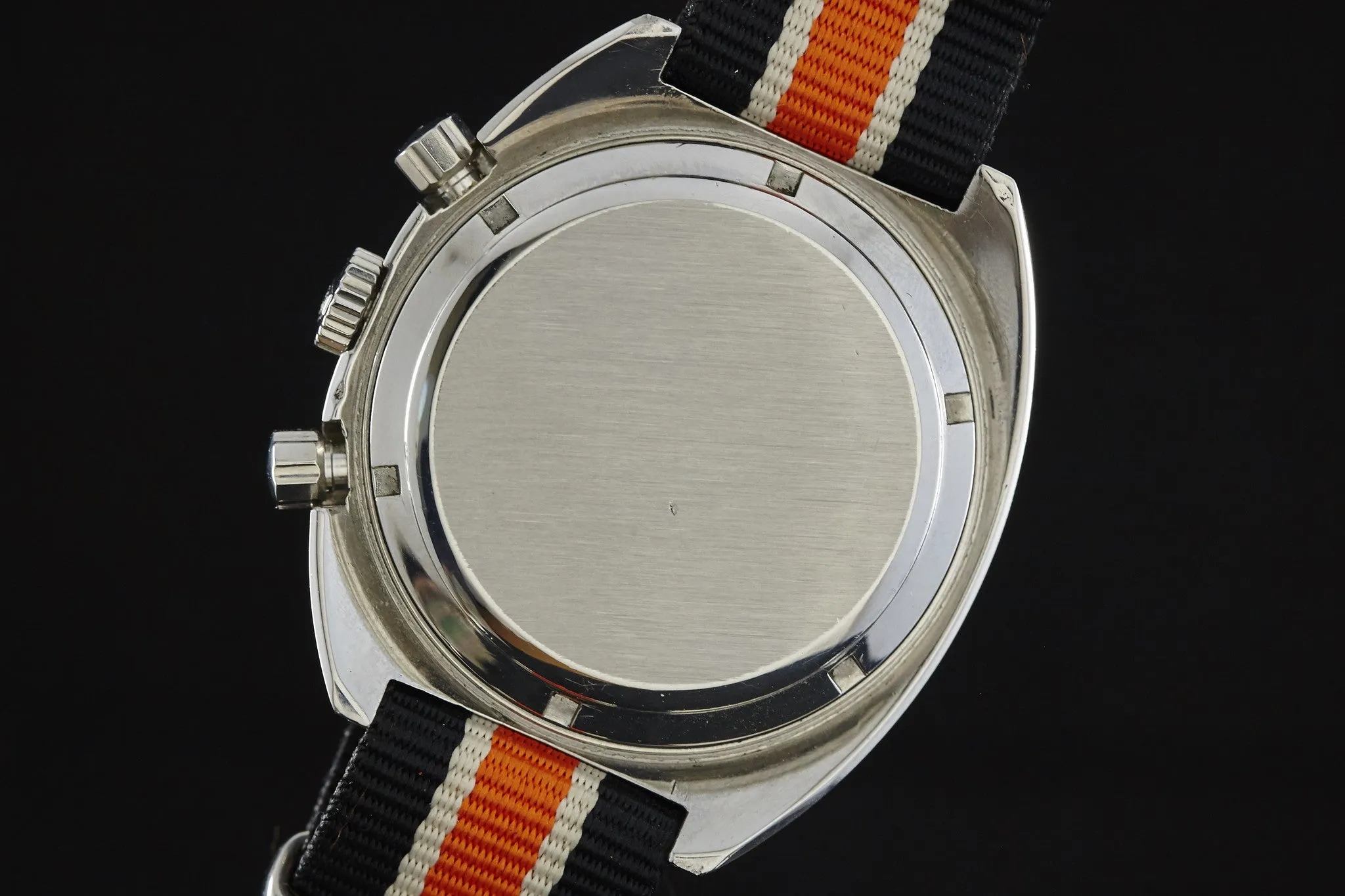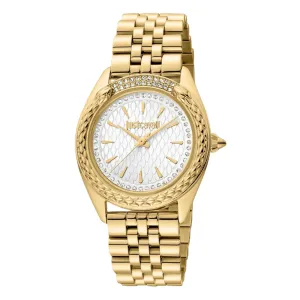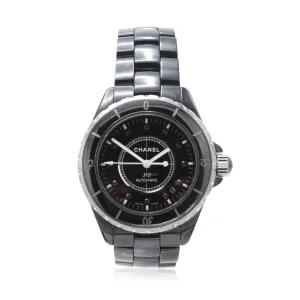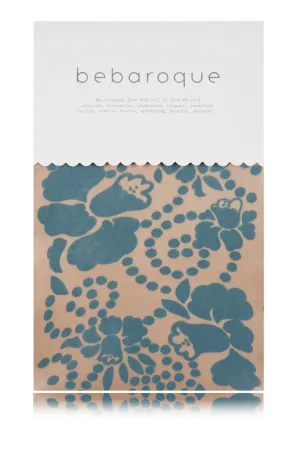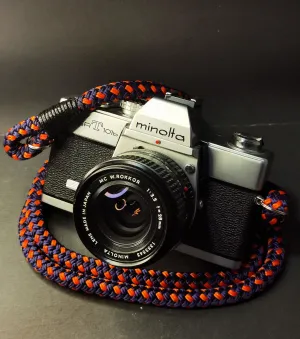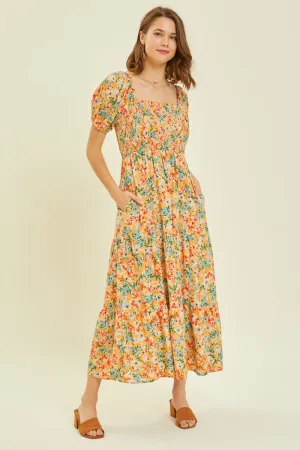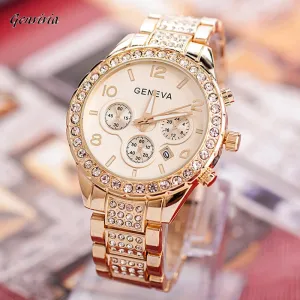It strikes us as somewhat ironic that while Heuer is perhaps best known for introducing the Calibre 11 (through ) automatic chronograph movement and inserting it in some of the most iconic 1970s timepieces ever produced, our favorites from the brand are almost always the "lesser" versions - powered by good old fashioned manual-winding Valjoux movements.
There's a multitude of reasons for this seemingly odd preference:
For starters, as important and impressive an innovation in timekeeping as the Calibre 11 was (and it really, really was), it simply isn't our favorite movement. The reasons for this are varied, but it ultimately comes down to two primary points. Firstly, as cool as automatic chronographs are, they are inherently less accurate than manual winding versions. Automatic movements require an additional escapement through which amplitude is lost, resulting in less accurate timekeeping than manual units. For sure, this difference is generally negligible, but it is worthy of note. Secondly, because these movements were the first of their kind, performance and reliability aren't at the top of their game, whereas the Valjoux manual counterparts that preceded them were at the top of their game. Reliable, accurate, and robust as all get out.
In addition to the differences in the movements, there is a significant difference in how these watches wear. While the cushion cases used on both manual and automatic-driven Autavias in the 1970s outwardly appear the same, the difference in thickness between them is significant. Automatic movements required extra clearance, so while the length and width of the cases were uniform, the depth of the case varied considerably. Cushion cases were introduced around 1969 as the new housing for the Chronomatic movements, modernizing Heuer's look and ultimately setting the tone for sports watch design in the 1970s.
While we are big fans of the look in general, we have to admit that as our tastes mature we find some of the larger automatic pieces a bit of a bear on the wrist - top heavy and just a little too big. The slimmer manual versions, on the other hand, have all the looks but are considerably slimmer, making for a better wear all around.
Lastly, there's the issue of availability. We'd be lying to you if we said we weren't driven by rarity to some degree. Of course all vintage pieces inherently have a certain degree of rarity, and Heuer sports models are no exception. But if there is an execution of a particular timepiece that is less common than others, chances are we'll be drawn to it.
Since manual winding cushion-cased Autavias rarely come up for sale, we jumped at the chance to nab this super cool (and super clean!) twin register version with orange dial accents. "Orange Boy" automatics are among the most desirable Autavias on the market, but manual versions like this one are rare as hens teeth. Technically they aren't as valuable as their automatic siblings, but when there is one manual winder for every 25 automatics, which do you think we'd choose?
For a comparison of early Autavia models, check out this great reference at OnTheDash!




